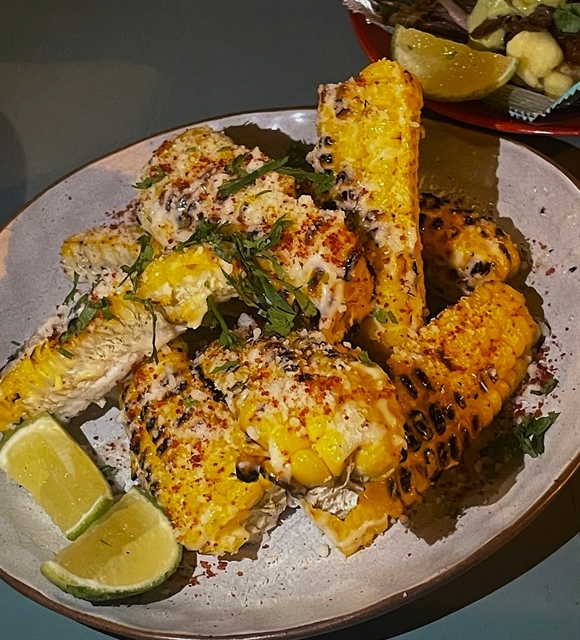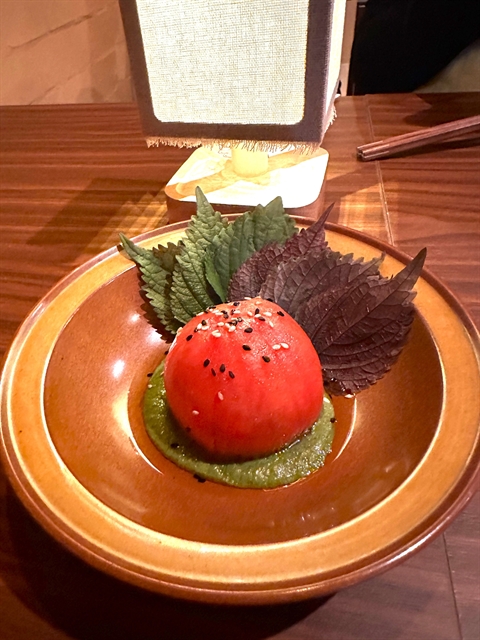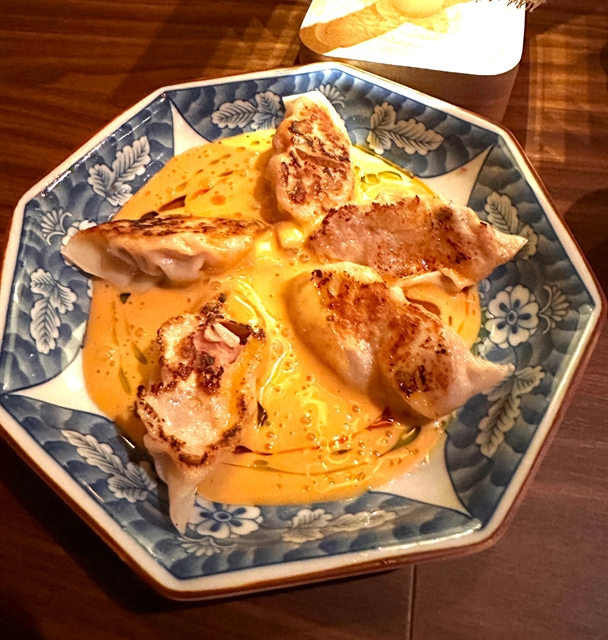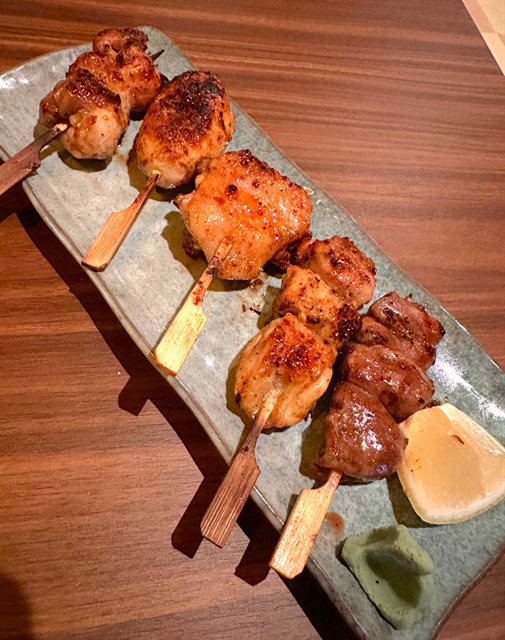 Restaurant Review
Restaurant Review

Hamy Nguyễn
It might sound a little unconventional, but lately I’ve found myself discovering new restaurants through Threads. As it turns out, the platform has quietly become a go-to space for both diners and restaurateurs to share quick updates and insider news.
 |
| A poster at Roji 21’s entrance depicts a Vietnamese 'bia hơi' mug gently clinking with a Japanese sake cup, symbolising a warm cross-cultural toast. Photo courtesy of Hamy Nguyễn |
That’s how I came across Roji 21, a modern izakaya right in downtown Hà Nội. The restaurant introduced itself in a short, almost casual post: a compact space, a contemporary vibe and a menu blending Japanese and Vietnamese flavours. Naturally, my curiosity was piqued and I had to see if it lived up to its quiet confidence.
 |
| Fermented tomato with Vietnamese coriander sauce. Photo courtesy of Hamy Nguyễn |
Tucked away on Liên Trì Street, one of Hà Nội’s quietly elegant corners, Roji 21 makes a subtle yet striking first impression. Its entrance says it all: a logo featuring a Vietnamese bia hơi mug gently clinking with a Japanese sake cup – a perfect symbol of cultural harmony.
Inside, the space feels warmly intimate, bathed in soft golden light. The design is simple yet thoughtful, with traditional wood textures balanced by modern indigo tones, creating an atmosphere that feels both grounded and refreshingly contemporary.
“Roji”, meaning "alleyway" in Japanese, represents those hidden, emotional corners where daily life and quiet connection unfold. The number refers to its address, but also hints at “two in one” -- a fitting metaphor for the way Japanese and Vietnamese cultures intertwine throughout the concept.
 |
| Beef tartare. Photo courtesy of Hamy Nguyễn |
When I visited, it was during the soft opening, and the menu was quite on the petite side -- shorter than what you’d usually find at an izakaya (where half the fun is coming back just to try what you missed last time). But as it turns out, Roji 21 plays by seasons -- the menu shifts with the weather -- which sounds like a pretty good excuse to keep coming back.
That evening’s tasting started with the fermented tomato with Vietnamese coriander sauce: Đà Lạt tomatoes soaked in Japanese soy for seven days, served with a pesto-inspired sauce made from cashew and rau ngổ (rice paddy herb), and paired with a purple perilla leaf.
The tomato was the star here: sweet, juicy, and full of life. The sauce, a clever Vietnamese twist on pesto, carried that unmistakable rau ngổ aroma: bright, herbaceous and the perfect palate refresher.
 |
| Egg cream gyoza. Photo courtesy of Hamy Nguyễn |
Next came the beef tartare, made with fresh Australian sirloin, dressed in kumquat vinegar and a mắc khén-hạt dổi paste, served with peanuts and crispy lá lốt (Piper lolot) leaf tempura. Tartare is always my personal test of a kitchen’s confidence; if the beef shines, everything else falls into place.
And this one did -- mostly. The beef was beautifully fresh, though I wished the mắc khén and hạt dổi notes had spoken up a bit more. The lá lốt leaf tempura was fragrant but slightly oily.
The egg cream gyoza was, without question, the highlight of the night. Shrimp-and-pork dumplings nestled under a cloud of brown butter and orange egg foam, finished with scallion oil. It was rich yet balanced, no flavour overpowering another. Even as it cooled, the sauce kept its silkiness -- a dish that holds its ground, hot or not -- and that’s saying something.
 |
| Crispy chicken cartilage. Photo courtesy of Hamy Nguyễn |
Next up was the crispy chicken cartilage, coated in red miso, roasted soybean powder and a yuzu-wasabi mayonnaise. Chicken cartilage is a classic izakaya staple, and here the yuzu-mustard dressing was a clever touch -- brightening the dish, cutting through the richness, and adding a subtle, fragrant lift without overpowering the natural flavour of the cartilage.
Finally, the Omaka Yakitori set was a mix of thigh, breast, wing, heart and minced chicken skewer, glazed in honey and tare sauce. The meat stayed perfectly juicy, and unlike some izakayas where the tare can be overly salty, this one leaned gently sweet -- a thoughtful touch that suits the Vietnamese palate.
 |
| Omaka Yakitori set. Photo courtesy of Hamy Nguyễn |
Roji 21 is a thoughtful balance of flavours, cultures, and atmosphere. From the playful nods to Vietnamese and Japanese drinking traditions to the seasonally inspired dishes that surprise and delight, every detail feels considered yet unpretentious. It’s a place that invites you to slow down, savour each bite and discover the charm of hidden corners in the heart of the city.
For anyone looking to escape the noise of Hà Nội’s busy streets while still enjoying vibrant, inventive food, Roji 21 is a quietly confident destination worth exploring and one that will almost certainly call you back, season after season. VNS
--------------
ROJI 21
Address: 21 Liên Trì Street, Hoàn Kiếm, Hà Nội
Price: from VNĐ40,000-270,000
Comment: cosy, modern, playful, innovative, minimalist